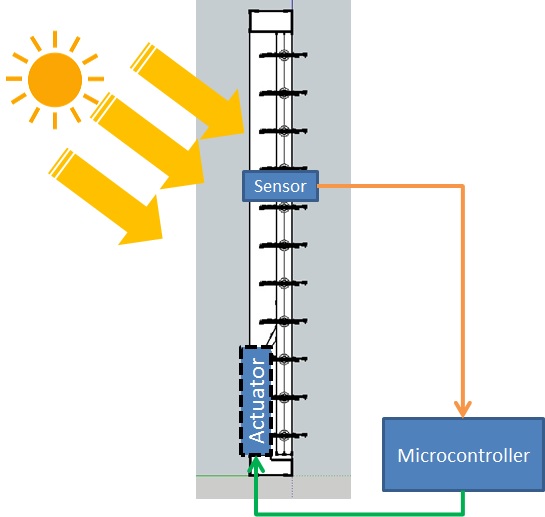Development and Innovation of Exterior Shading Devices for Climate Responsive Architecture
Main Article Content
Abstract
The current energy crisis and global warming drive many issues of architectural practice and research fields including sustainable architecture and design guidelines for environmentally friendly. The effective strategy of reducing the solar radiation passing into the building, is to design building skins responsive to the climate and radiation from the sun. However, today few of intelligent systems imparted to the responsive building skins, have been already invented and selling, unfortunately, these equipments cannot be offered to all consumers, but only for the high-end projects due to their high technology process and expensive cost as mostly the same as other eco-friendly products in the market, especially in Thailand. The question arises as to whether it is possible to develop the climate responsive building skins by low-cost technology.
This article aims to review the developments of climate responsive building skins in term of solar shading device, and to propose the innovation of automatically adjustable sun louvers with real-time solar tracking systems. Enhancing the efficiency of solar radiation protection into the building, the operable sun louvers can be gained the indirect natural daylight in the same time. With emphasis in the low-cost technology, this product is composed of light weight steel blades installed with inexpensive adjustable prefab hinges, solar tracker system with sensor of LDR (Light Dependent Resistors), and local microcontroller board. This climate responsive sun louvers with simple, uncomplicated, and economical systems can be integrated into both existing buildings and new design buildings, and be an ideal part of the “green” architectural solution affordable for every single households.
Downloads
Article Details

This work is licensed under a Creative Commons Attribution-NonCommercial-NoDerivatives 4.0 International License.
All material is licensed under the terms of the Creative Commons Attribution 4.0 International (CC-BY-NC-ND 4.0) License, unless otherwise stated. As such, authors are free to share, copy, and redistribute the material in any medium or format. The authors must give appropriate credit, provide a link to the license, and indicate if changes were made. The authors may do so in any reasonable manner, but not in any way that suggests the licensor endorses you or your use. The authors may not use the material for commercial purposes. If the authors remix, transform, or build upon the material, they may not distribute the modified material, unless permission is obtained from JARS. Final, accepted versions of the paper may be posted on third party repositories, provided appropriate acknowledgement to the original source is clearly noted.
References
Daniels, K. (1997). Technology of ecological buildings. Basel: BirkhäuserVerlag.
Editorial Board, ASA. (2008). ผลการคัดเลือกผลงานสถาปัตยกรรมดีเด่นประจำปี 2551 [The architectural excellence of the year 2008]. ASA – Journal of Architecture, 08:51-09:51, 87.
Kamal, M. A. (2013). Le Corbusier’s solar shading strategy for tropical environment: A sustainable approach. Journal of Architectural/Planning Research and Studies, 10(1), 19-26.
Lopkerd, P. (2015). การพัฒนาต้นแบบระบบติดตามแสงอาทิตย์ต้นทุนตํา่าสำหรับแผงกันแดดแบบปรับได้ [The prototype development of low-cost solar tracking system for adjustable sun louvers]. Paper presented at The 6th Built Environment Research Associates Conference 2015 (BERAC 6), July 17, 2015, Faculty of Architecture and Planning, Thammasat University, 42-48.
Mestek Architectural Group [MESTEK]. (2012). Product catalog of solar shading louver systems - MESTEK by COLT (MF 10 71 13 - Exterior Sun Control Devices). Retrieved April 1, 2016, from http://www.mestek.com/architectural.asp#.VxG-w_l97IUon
Noble, J. (2009). Programming interactivity. U.S.A.: O’Reilly Media Inc.
Ots, E. (2011). Decoding theoryspeak: An Illustrated guide to architectural theory. London: Routledge, 180-181.
Schwartz, M. (2014). Arduino home automation. Birmingham: Packt Publishing.
Sreshthaputra, A. (2007). สถาปัตยกรรมสีเขียว: การท้าทายเพื่อความยั่งยืน [Green architecture: The sustainability challenge]. ASA – Journal of Architecture, 10:51-11:51, 70-76.
Srisutapan, A. (2014). ศักยภาพการลดการใช้พลังงานจากการใช้แสงธรรมชาติตามกฎกระทรวง [Potential of energy saving from daylight usage under ministerial regulation]. Journal of Architectural/Planning Research and Studies, 11(2), 37-52.
Tavares, S. G. & Silva, H-d. C. (2007). Brazilian solar architecture: An analysis of mesp daylighting system. Proceedings of ISES World Congress 2007, 1(5), 476-480.
Velikov, K. & Thün, G. (2013). Responsive building envelopes: Characteristics and evolving paradigms. Design and construction of high-performance homes: Building envelopes renewable energies and integrated practice, 75–93. Oxford: Routledge.
Wilson, R. (2014). 10 Key questions about exterior shading. Retrieved April 1, 2016, from http://www.constructionspecifier.com/10-key-questions-about-exterior-shading/


